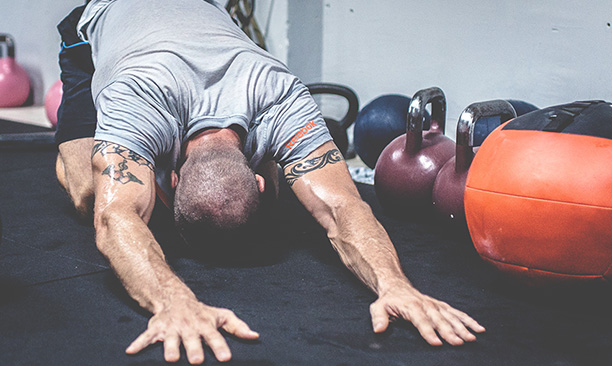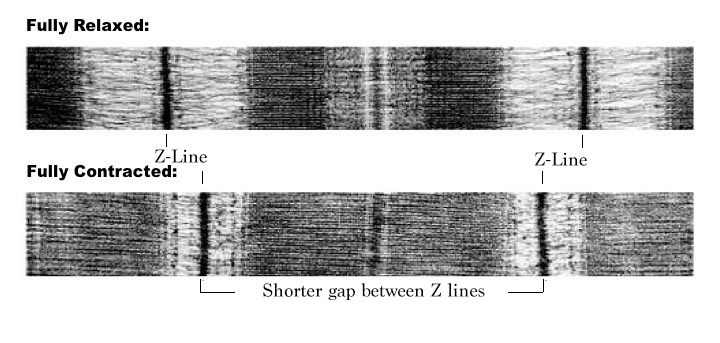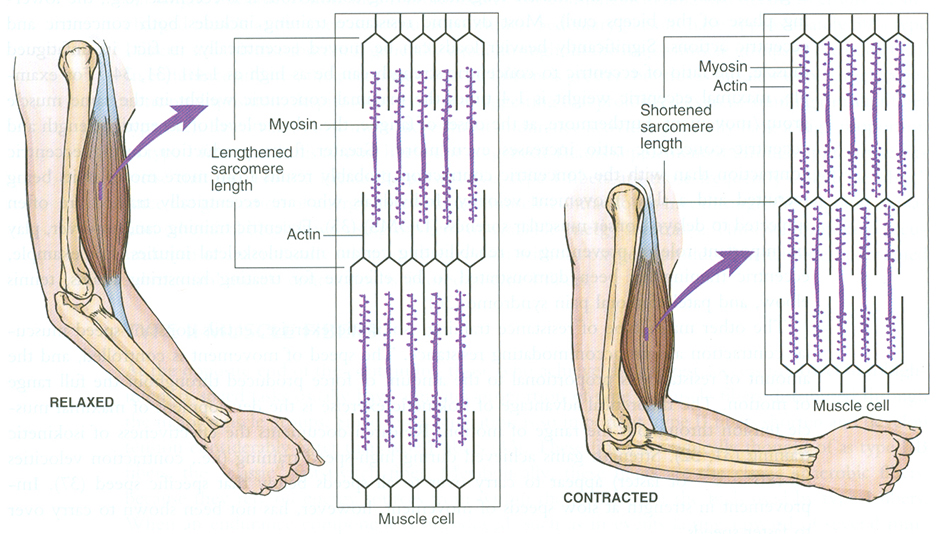What Is Muscle Soreness?
If you haven’t heard of DOMS you most probably have felt it. Muscle soreness or delayed onset of muscle soreness (DOMS) is a commonly occurring dull pain or muscle ache, with symptoms that may include tenderness and stiffness. This often precedes a number of days after your muscle has undergone an intense workload and high stresses, such as an intense weightlifting workout session.
DOMS occur due to trauma to your muscle. When you workout a muscle and place it under high stresses, specifically using high weight loads, the muscles that are being worked will undergo micro-trauma within the muscle fibres. This microtrauma to the muscle fibres will cause inflammation and this is where muscle soreness or DOMS stems from.
You should first understand the mechanism that causes the muscle fibres to tear (muscle microtrauma) and how this microtrauma to the muscle fibres impacts your body and muscle growth. A little hint: micro trauma forms the basis of muscle growth and development in mass and strength gaining athletes. Once you understand the mechanism that effects micro-trauma to the muscle fibres you can better perfect your exercise techniques and develop a workout plan that has a greater effect on your muscle growth and development.
How Is Muscle Fibre Micro Trauma Caused?
To bring about micro-trauma to the muscle fibres you have to stimulate the muscle and place it under a high stress – usually more than what it is usually used to. In most cases this would be a high-intensity workout and the best example to support this is weight lifting, utilising medium to heavy weight loads. However, other high-intensity exercises or high volume exercise can cause DOMS to occur too.
When you lift a heavy weight the muscle fibres within the muscle begin to a activate, as you move through the range of motion from both eccentric (muscle lengthening) and concentric (muscle shortening), these muscle fibres (in simple terms) get pulled apart (lengthened) on the eccentric and pushed together (shortened) on the concentric.
There is a big misconception when people lift weights. Many people focus on the concentric phase of an exercise, if we take an example like a bicep curl, many people will focus intensely on the lifting phase of the movement – trying to lift the dumbbell up slow and steadily, with the belief that this is the most important phase when trying to build muscle. They then often let the dumbbell just drop down at speed with very little resistance or control to the bottom of phase – so that their arm is straight and bicep fully lengthened. Stop there now!
The concentric phase isn’t the most important phase when trying to maximise muscle growth but, it’s the eccentric (muscle lengthening) phase that plays the key role in muscle growth.
If you could look at a microscopic level at these muscle fibres, what would you see? You would see these muscle fibres overlapping one another and being pushed together on the concentric (muscle shortening) phase and then as the muscle moves into the eccentric (muscle lengthening) phase the muscle fibres will in a basic sense slide apart and lengthen out. If you do this same action while utilising a heavy weight, a weight load that is somewhat challenging for your muscle, then as you move from the concentric phase into the eccentric phase the muscle fibres will begin to form micro tears (trauma) at the Z-lines of the muscle sarcomere.
Below is a microscopic image showing the structure of a sarcomere under a relaxed and contracted muscle:
A sarcomere is a basic unit of striated muscle tissue. A repeating unit between two Z lines. The muscle fibres contain numerous tubular myofibrils. Myofibrils are made up of repeating sections of sarcomeres (see image above). If we look closer at the structure then you’ll see that these sarcomeres are made up of long, fibres proteins as filaments that slide past each other when a muscle is contracted and relaxed.
The diagram below shows how the structure of the sarcomere changes when the arm is relaxed and contracted:
These micro tears formed at the Z-line of the sarcomere then become inflamed causing soreness (DOMS) but, this is where your body starts to adapt. Your body will repair the site that has become damaged – where the micro tears have formed. Under protein synthesis, your body will rebuild the protein structure of the muscle fibres and also improve upon it by increase the size of the structure so that it can handle the stresses that it was placed under. This is muscle growth. If you repeat this action over a time period, where you push yourself to incrementally lift higher weight loads, then this same process will occur. If you exercise and do not push your body and force yourself to utilise an incremental overload programme then you would struggle to get stronger and grow your muscles to any greater capacity.
Incremental overload where your goal is to continually aim to lift a heavier weight is key to building mass and getting stronger. If you keep to the same weight time-after-time in each training session, your muscle fibres will get used to the stresses placed upon them and will not tear to any great effect.
The two major point that you should know understand for muscle growth is that one, it is the eccentric (lengthening) phase that contributes most to muscle fibre tears and therefore muscle growth and development. Second, those muscle fibres must be continually pushed over time with higher weight loads that they are not used to, so that the muscle fibres get maximal stimulation and in turn, more muscle fibre tears can form, ultimately leading to muscle growth and development.
So all of you focused on getting the dumbbell up in your bicep curl, stop now…focus your energy in the eccentric phase by controlling the movement and slowing it down as you lower the weight back down. You can actually train purely focused on the eccentric phase of the movement and almost remove to an extent the concentric phase and see incredible results in terms of muscle strength and size in a short period of time. It’s called negative training and is a useful training method to overcome plateaus in your training and add strength and size very quickly.
Now back to DOMS…
How Long Does DOMS Last?
DOMS is felt 24-72 after exercise and subsides after a few days. Depending on the level that your body is conditioned you may experience the severity and duration on DOMS differently.
Each and everyone’s body reacts differently to training but, there are common occurrences that athletes notice in terms of their experience with DOMS. Usually, if an experienced athlete has not trained intensely for some time – maybe due to injury – then when they resume high-intensity weight training again they will often feel DOMS to quite a severe level. It can also last longer than if they have not kept conditioned – sometimes up to a week. However, when they are conditioned and training frequently then it is often reversed, the effect of DOMS become more predictable – coming on the day after exercise and lasting maybe a day and easing off the following day. This means that they can often train more frequently as the muscle may have recovered much faster.
However, this is not a rule for elite athletes. If new exercises are added to the programme or the workout is rotated then the effect of DOMS may become more prevalent after that workout. This is usually because you have shocked the muscle. When you shock the muscle i.e. stimulate it in a way that it is not used to and the muscle finds it somewhat challenging, then you may feel the effect of DOMS more-so, as muscle fibres have succumbed to more micro-tears as a result.
What is interesting is that high-performance athletes can get to a point where they don’t experience site-specific soreness at all even after an intense multi-day training schedule.
Does Muscle Soreness Mean That You Have Trained Effectively?
There is not scientific evidence that states muscle soreness must occur for those muscles to adapt and build in strength and size. However, it can be an indicator of an effect workout but, as mentioned elite performance athletes may experience little if any soreness as long as they maintain their conditioning and intensity levels. As you start to train more your body will start to adapt and you may experience the soreness to less of a degree.
However, there is a genetic component to a person’s sensitivity to pain and soreness. A person can be a high-responder, low-responder, or non-responder. There’s a spectrum to how we experience pain and soreness, and it’s important to understand where you fall on this spectrum so that you can better monitor your progress and adapt your workouts as your body develops.
How To Reduce Muscle Soreness
There are a number of treatments to reduce the severity of muscle soreness but, there is no magic bullet to get rid of it.
Below are examples of treatments that have shown could work with scientific evidence backing them up:
Compression Garments – worn during the workout have shown to reduce the effects of DOMS, this may be due to the reduction of muscle oscillation and thus micro-tears.
Sports Massage – has shown to help reduce muscle soreness as it promotes blood flow to the muscles.
Low-Intensity Exercise – such as a light jog can help promote blood blow to the muscles, waste removal, nutrient delivery, lymphatic flow, and improved muscle function. The analgesic effect will help temporarily to reduce the pain while you are exercising but, it will be short lived. A great example of low-intensity exercise would be 30 minutes of brisk walking, keeping your heart rate below 120 BPM.
Foam Rolling – has become a staple piece of kit over for the gym user. Foam rollers promote fluid movement and blood flow through a compression and rolling action. It works just like a massage and it’s often a cheaper alternative too. A foam roller ranges from £10-40 depending on the design and density of the roller. You can find some with specially design ridges that provide deep tissues and trigger point massage. Foam rollers can be used by yourself without that need of assistance, and come at a price less than a sports massage – it’s definitely a good investment!
Improved Sleep – this is underestimated. Your body repairs itself during sleep. If you do not receive quality sleep then this will hinder your body’s recovery process. Most people require 6-8 hours of shut-eye a night, and most lifters will fall into this time frame. However, heavy strength lifters may require as much as 10 hours of sleep a night to see the optimum recovery. With busy lives it’s a hard thing to get anything like 10 hours but, as Arnold Schwarzenegger said “sleep faster” – it’s about the quality of sleep, not quantity!
Contrast Showers – alternating from cold to hot shower have shown some effect on reducing muscle soreness. Under cooler temperatures the capillaries in the muscle constrict reducing blood flow, once the muscle has lowered in temperature so a sufficient level you can then apply higher temperatures which will quickly dilate the capillaries, opening them up and increasing blood flow to the muscles.
Increase Protein Intake – your body requires adequate nutrition for it to carry out its functions – this includes for it to grow. The process of muscle growth is known as protein synthesis, for protein synthesis to occur at optimum levels you need the optimum amount of protein intake. Simple really! This means you need some idea of your daily protein requirements, and then source them first through quality whole foods and then supplementation to reassure that you are optimising your intake of protein.
Epsom Salt Bath – a hot bath will help loosen up the muscle and promote blood flow while the magnesium in the Epsom salts can be absorbed through the skin helping to reduce soreness.
Join the conversation below. And like & share this article now.




very nice post, i certainly love this website, keep on it
I am often to blogging and i really appreciate your content. The article has really peaks my interest. I am going to bookmark your site and keep checking for new information.